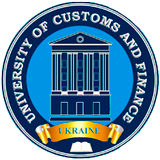MODEL THREATS AND ENSURE THE INTEGRITY OF INFORMATION
Abstract
The analysis presented in the paper shows that there is no unambiguous interpretation of many terms in the modern community of scientists and practitioners. On this basis, one can conclude that there is a need for uniform interpretation of terms. This will allow representatives of different fields to communicate more closely. The integrity model and threats in the infocommunication systems makes it possible to understand the place of information integrity in modern systems. Currently, violation of information integrity is the most dangerous impact on all systems, including critical ones. The impact on information, from the point of view of integrity, can be its distortion and imposition. For the purpose of protection, both organizational and technical methods. From the economic point of view, the construction of technical means of protection systems is unprofitable. However, the cost of these systems of defense in oftentimes can be less than, than possible damage that can be inflicted as a result of attacks. The threat model proposed in the article reflects both the objects targeted by the threats and the threats themselves. Based on the results of the analysis, we can conclude that the most vulnerable elements are software. The number of attacks on software is more than 53 percent. The paper describes the possible methods and means of providing and monitoring the information integrity. Among them it is possible to allocate both well known methods (for example, noise proof coding), and methods which are rather seldom used for maintenance of information integrity (steganography). The methods of providing of integrity of information can be divided into two large groups. To the first group will be belongs methods that directly provide to integrity of information. Methods that allow you to control the integrity of information and, if necessary, restore the message belong to the second group. Some methods are used both in the first and in second groups. For example, facilities of anti-virus defense allow both to protect a computer from a virus (first group) and recover the damaged file (second group). The analysis which has been spent, shows variety of forms and methods of construction of systems of maintenance of information integrity.
References
2. Shennon K. Raboty po teorii informatsii i kibernetike. M.: Izd-vo inostrannoy literatury, 1963. 830 s.
3. . Kharchenko V.S. Multiversion systems: Models, Reliability, Design Technologies: Proc. 10th European Conference of Safety and Reliability. Munich, 1999. Р. 73–77.
4. ISO/IEC 2382:2015, Information technology — Vocabulary https://www.iso.org/standard/63598.html
5. Pevnev V.YA. Metody obespechenyya tselostnosty ynformatsyy v ynfokommunykatsyonnykh systemakh. Visnyk NTU „KHPI”. Seriya: Tekhnika ta elektrofizika vysokykh napruh. Kharkiv, 2015. № 51.S.74-77
6. Karlsson J., Dooley L.S., Pulkkis G. Routing Security in Ad-hoc Networks. IISIT in Informing Science and Information Technology. 2012. Vol. 9.P.369 – 383
7. Luna J., Suri N., Iorga M., Karmel A. Leveraging the Potential of Cloud Security Service-Level Agreements through Standards IEEE Cloud Computing. 2015. Vol. 2. Issue 3. P. 32–40.
8. Juliadotter N., Choo K. Cloud Attack and Risk Assessment Taxonomy.IEEE Cloud Computing. 2015. Vol. 1, Issue 2. P. 14-20.
9. Komarov M.YU., Honchar S.F Analiz i doslidzhennya zahroz dlya zakhyshchenoho vuzla Internet dostupa. Informatyka, obchyslyuvalʹna tekhnika ta avtomatyzatsiya. Tom 29 (68). CH. 1 № 4. 2018. S. 165-168.
10. Tsuranov M.V., Strukov V.M., Pevnev V.YA.. Metody ta zasoby borotʹby z pravoporushennyamy v informatsiynoyi sferi: navch posibnyk. Kharkiv:KHNUVS, 2015.-256 s.
11. Proskurin V.G., Krutov S.V., Matskevich I.V. Programmno-apparatnyye sredstva obespecheniya informatsionnoy bezopasnosti. Zashchita v operatsionnykh sistemakh: Ucheb.posobiye dlya vuzov M.:Radio i svyaz'. 2000. 168 s
12. DSTU 3396.2-97. Zakhist ínformatsíí̈. Tekhníchniy zakhist ínformatsíí̈. Termíni ta viznachennya. [Chynnyy vid 1998.01.01]. Vyd. ofits. Kyyiv, DERZHSTANDART UKRAYINY 1997. 22 s
13. Kravchenko, V.I. Oruzhiye na netraditsionnykh printsipakh: Elektromagnitnoye oruzhiye. Kharkív: NTU «KHPI», 2009.266 s.
14. Smirnov M., Vatolin D., Ratushnyak A., Yukin V. Metody szhatiya dannykh. Ustroystvo arkhivatorov, szhatiye izobrazheniy i video. M.: Dialog-MIFI. 2002. S.384.
15. Pevnev V., Tsuranov M. The construction of the optimal code tables. Systemy obrobky informatsiyi. 2012. №3 (108), р.27–30
16. Pevnev V., Novakov Y., Tsuranov M, Kharchenko V. The Method of Data Integrity Assurance for Increasing IoT Infrastructure Security. InfoTech-2017: proceedings of the 31 th IC on Information Technologies. Sofia, 2017. Р.27-36
17. Oleshchenko V, Pevnev V. Development of digital steganography techniques for copyright protection, based on the watermark. Advanced information systems. 2017. №1. Р.57-60
18. Pro elektronni dovirchi posluhy: Zakon Ukrayiny vid 05.10.2017 №2155-VIII. Vidomosti Verkhovnoyi Rady Ukrayiny. 2017 r., № 45. Stor.5. S. 400
19. Pevnev V.YA. Metodyka postroenyya psevdoprostykh chysel Systemy obrobky informatsiyi. 2016. № 140 (3). s. 30-34
20. Pevnev V.YA. Henerator prostykh chysel. Kafedra system ynformatsyy: sb. nauch. tr. Kharʹkov, 2014. S. 140-146
21. Pevnev V. Pseudoprime Numbers: Basic Concepts and the Problem of Security. ICTERI Applications: Integration, Harmonization and Knowledge Transfer: proc. 13th Int. Conf. ICTERI 2017( Kyiv, May 15-18, 2017.), CEUR-WS.org, online-c.583-593
22. Matskevich I.V. M.:Radio i svyaz'. 2000. S.168
23. Shennon K. Ye. Matematicheskaya teoriya svyazi. Raboty po teorii informatsii i kibernetiki. M.: IL. 1963. S.476
24. Piterson U., Ueldon E. Kody, ispravlyayushchiye oshibki. M.: Mir, 1976. S.594
25. Gallager, R. Teoriya informatsii i nadezhnaya svyaz'. M.: Sov. radio, 1974. S.568
26. Morelos-Saragosa R. Iskusstvo pomekhoustoychivogo kodirovaniya. Metody,algoritmy, primeneniyeM.: Tekhnosfera. 2005. S.320.
27. Pevnev V.YA. Sposíb vídnovlennya ínformatsíí̈ pri obmíní danimi u telekomuníkatsíynikh sistemakh /. Pêvnêv V.YA. i dr. // D.p. №26778. Byul., 2007.- №16.
28. Pevnev V.YA., Tsuranov M.V. Teoretichne obg̀runtuvannya metodu vídnovlennya povídomlennya, priynyatogo z pomilkami. Sistemi obrobki ínformatsíí̈ . 2013. № 2(109). S 194 -196.

 ISSN
ISSN 




